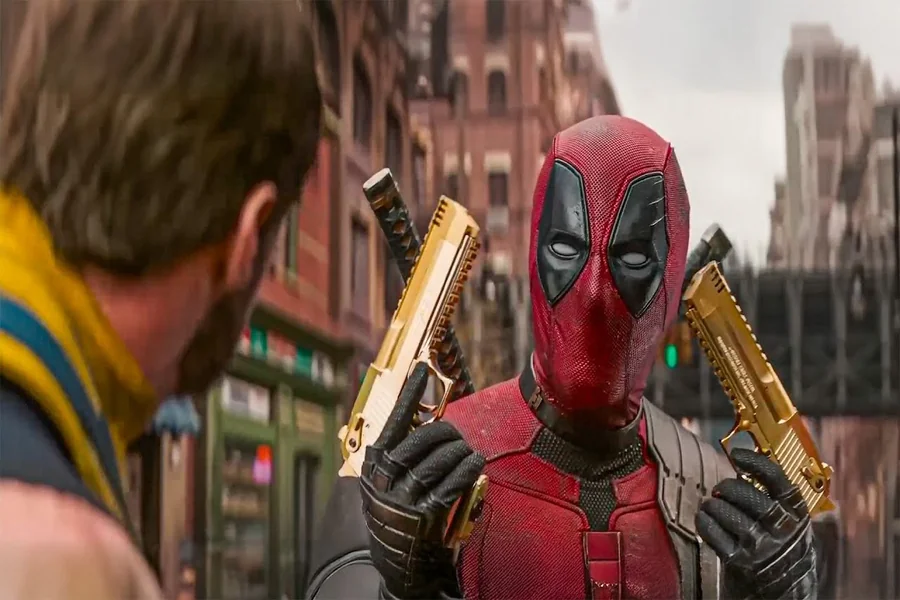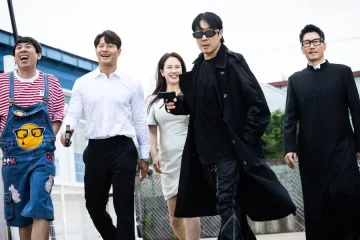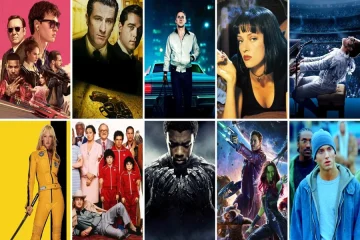In an era dominated by digital content, social media, and on-demand streaming, the way audiences discover and engage with films has drastically changed. Yet, one timeless marketing tool that remains a critical part of the movie industry’s promotional strategy is the movie trailer. Once considered a simple preview of a film, movie trailers have evolved into an essential component of the movie-going experience, serving as a powerful marketing tool that can influence audience interest, create anticipation, and even determine a film’s success.
In this article, we will explore why movie trailers are more important than ever. We’ll examine the role they play in the digital age, their influence on box office performance, the evolution of trailer formats, and how filmmakers and studios craft these previews to generate buzz and excitement among audiences.
1. The Digital Age: Trailers as the First Point of Contact
In the past, movie trailers were exclusively shown in theaters, offering a glimpse of upcoming films to moviegoers as they waited for the feature presentation. However, the rise of digital media and the increasing prevalence of online streaming has transformed how audiences engage with trailers. Today, movie trailers are the first point of contact between a film and its potential audience.
Online Platforms and Social Media Amplification
With the advent of platforms like YouTube, Facebook, Instagram, and Twitter, movie trailers now have the ability to reach a global audience almost instantly. Trailers are often uploaded online days or even months before the film’s release, allowing fans to view them repeatedly and share them with their networks. This ability to circulate quickly through social media channels means that trailers can generate enormous buzz and excitement, often making them the primary way audiences discover new films.
Major studios release trailers on their official YouTube channels, ensuring that they are accessible to millions of potential viewers worldwide. Additionally, trailers are often shared across social media platforms, leading to viral moments that can make or break a film’s early momentum. The trailer becomes a social media event, with fans discussing, reacting to, and analyzing every frame, generating conversation long before the film’s official release.
The Power of Viral Trailers
In the digital age, trailers are often used as a key strategy for creating viral moments. Trailers for films such as Avengers: Endgame (2019), It (2017), and The Lion King (2019) became cultural phenomena, generating millions of views and widespread discussions. Trailers now have the ability to create massive anticipation, long before the film hits theaters, all due to their potential to go viral online. For filmmakers and studios, creating a trailer that resonates with audiences and garners viral attention can significantly boost a film’s visibility and anticipation.
2. The Influence of Trailers on Audience Decision-Making
In the digital era, where there is an overwhelming abundance of content competing for our attention, movie trailers have become crucial for making decisions about what films to watch. With so many choices available across different platforms, the trailer serves as the gatekeeper to whether audiences will choose to see a particular film.
Instant Impact on Audience Interest
A well-crafted trailer has the ability to spark instant interest and curiosity in a film, making it a critical factor in audience decision-making. Movie trailers are often the deciding factor between whether someone will head to the theater or decide to pass on a film. A trailer provides the first impression of a film’s tone, genre, and storytelling style, and it can set the stage for building interest in the film’s release.
Whether it’s a pulse-pounding action sequence, a moving emotional moment, or a witty line of dialogue, a trailer’s job is to highlight the best aspects of a movie and leave the viewer wanting more. A film’s success at the box office can often be linked to how effective the trailer was in piquing the audience’s interest and convincing them to make a ticket purchase.
The Rise of FOMO (Fear of Missing Out)
With the sheer number of films released each year, audiences are increasingly selective about which ones to prioritize. The trailer has become essential in driving the “fear of missing out” (FOMO) effect. When a trailer generates excitement, buzz, and early praise, people feel compelled to see it in theaters before it fades into the cultural conversation.
Films with trailers that excite and engage audiences tend to generate high levels of FOMO, leading to large opening weekends and extended box office runs. A prime example of this is Star Wars: The Force Awakens (2015), which leveraged the nostalgia of the franchise and its trailer’s cinematic visuals to generate a wave of anticipation that led to record-breaking box office numbers.
3. The Evolution of Trailer Formats: From Teasers to Full Previews
Over time, movie trailers have evolved in both format and length. While traditional trailers lasted around two minutes, today’s trailers vary widely in length and style, each designed to appeal to different audience segments and platforms.
Teasers, Full Trailers, and Final Previews
Movie marketing now includes multiple iterations of trailers, from short teasers to full-length trailers, and final previews that provide a more comprehensive look at the film. Each version serves a specific purpose at different stages of the promotional timeline:
- Teasers: Teaser trailers are typically short, around 30 seconds to a minute, designed to generate curiosity and anticipation for a film before the full trailer is released. They often provide a glimpse of the film’s premise or introduce key visuals without giving away too much plot.
- Full Trailers: These are the meat of a film’s promotional campaign, offering a more in-depth look at the characters, story, and visuals. They usually run for about two to three minutes and provide enough detail to hook viewers without revealing too much of the plot.
- Final Previews: These are the trailers released closer to the film’s official premiere, often containing the best scenes and giving a clearer idea of the narrative. They tend to be the most revealing and are designed to drive final ticket sales.
Innovative Trailer Formats for Different Platforms
As digital platforms evolve, so too do the ways trailers are shared. For example, trailers designed specifically for social media—particularly Instagram and TikTok—are often much shorter, with the goal of capturing attention quickly and engaging viewers through visually dynamic content. These platforms prioritize concise, visually striking moments, sometimes only offering 15-second clips to tease the larger story.
Some studios have also experimented with interactive trailers, where viewers can control what they see or influence the direction of the preview. Bandersnatch, a part of Netflix’s Black Mirror anthology, featured an interactive trailer-like experience where viewers could make decisions that shaped the content. This kind of trailer format blurs the lines between traditional trailers and the interactive nature of modern entertainment.
4. The Art of the Trailer: How Studios Craft a Film’s Narrative
Creating a trailer is an art form in itself, with editors, filmmakers, and marketers working together to craft a preview that excites, engages, and motivates audiences to take action. A successful trailer must strike the right balance between revealing enough to spark interest while keeping key plot elements hidden to avoid spoilers.
Crafting the Narrative
The key to a great trailer lies in how well it can communicate the essence of the film’s story, tone, and atmosphere in a brief amount of time. Whether it’s a lighthearted comedy, a spine-chilling horror film, or a gripping drama, the trailer must quickly establish the emotional stakes. A trailer can create suspense, build excitement, or make viewers laugh—all while ensuring they are intrigued enough to want to see more.
Many trailers use soundtracks, voiceovers, and sound design to emphasize the emotional tone of the film. For instance, horror movie trailers often use eerie sounds or unsettling music to enhance the tension, while action movie trailers might incorporate fast-paced, adrenaline-pumping beats to create excitement.
The Trailer as an Extension of the Film’s Branding
Trailers are also a key part of a film’s branding and public perception. For franchises like Marvel, Star Wars, or Harry Potter, the trailer becomes a vital part of a larger marketing strategy. Studios carefully design trailers to match the expectations of the fanbase, often hinting at key moments or cameos to generate buzz. The style and mood of the trailer must align with the broader identity of the film, ensuring that it fits within the established narrative and theme.
5. Measuring Success: How Trailers Impact Box Office and Streaming
The effectiveness of a trailer can often be directly linked to the film’s success, whether in terms of box office performance or streaming numbers. The anticipation created by a trailer can be crucial in determining a movie’s opening weekend success. If a trailer generates excitement and emotional investment, it can lead to significant ticket sales, both for initial openings and extended runs.
Box Office Impact
Trailers are often the first way a movie garners attention and hype, especially for big-budget blockbusters. The success of a film’s trailer can create immediate word-of-mouth buzz, leading to increased ticket sales and audience turnout. Conversely, a lackluster or underwhelming trailer may result in diminished interest, even for films with strong creative talent behind them. Film studios now use advanced analytics to track trailer performance across digital platforms, assessing metrics such as views, shares, and social media engagement to gauge audience response before making additional marketing investments.
Streaming Success
For films that are released on streaming platforms like Netflix or Amazon Prime Video, trailers still play a critical role in viewership. These platforms rely heavily on trailers to entice viewers to click “play.” The “preview” function, where users see a brief clip of a movie or show, is key to converting potential viewers into subscribers. The trailer, in this context, is essentially the deciding factor in whether a film is watched or passed over in favor of something else.
Conclusion: The Undeniable Power of Movie Trailers
Movie trailers have evolved from simple previews to powerful marketing tools that influence audiences and determine a film’s success. In today’s digital landscape, trailers are more important than ever, offering a direct line to global audiences and creating excitement long before a film’s release. From their role in generating buzz to their ability to showcase a film’s narrative, music, and emotional tone, trailers have become essential to the modern movie-going and streaming experience.
As the entertainment industry continues to evolve, so too will the art of the trailer. Whether through viral moments, interactive formats, or the strategic use of social media, the future of movie trailers is bright, and their influence will undoubtedly remain a key factor in how audiences engage with films for years to come.



